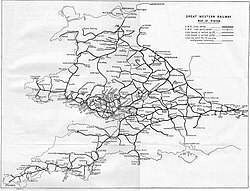Classification






The GWR pannier tank locomotives were classified as follows:
Small engines (wheelbase under 15'), rebuilt from saddle or side tanks
- 93, 850, 1901 Classes · G. Armstrong/W'hampton 1874-95, 292 locos
- 2021, 2101 Classes · Dean/W'hampton 1897-1905, 140 locos
Small engines (wheelbase under 15'), built as pannier tanks from new
- 5400 Class ·Collett/Swindon 1930, 25 locos
- 6400, 7400 Classes ·Collett/Swindon 1932-50, 90 locos
- 1366 Class · Collett/Swindon 1934, six locos
- 1600 Class · Hawksworth/Swindon 1949-55, 80 locos
Large engines (wheelbase over 15'), rebuilt from saddle or side tanks
- 302 Class · J. Armstrong/W'hampton 1864-5, eight locos
- 1016 Class ·G. Armstrong/W'hampton 1867-71, eight locos
- 1076 (Buffalo), 1134 Classes ·J. Armstrong/Swindon 1870-1881, 266 locos
- 645 and 1501 Classes ·G. Armstrong/W'hampton 1872-81, 106 locos
- 119 Class ·G. Armstrong/W'hampton (renewals after Gooch) 1878-83, 11 locos
- 322 Class ·G. Armstrong/W'hampton (renewals after Beyer) 1878-85, six locos
- 1813 Class ·Dean/Swindon 1882-4, 40 locos
- 1661 Class ·Dean/Swindon 1886-7, 40 locos
- 655 Class ·G. Armstrong/W'hampton 1892-7, 52 locos
- 1854 Class ·Dean/Swindon 1890-95, 120 locos
- 2721 Class ·Dean/Swindon 1897-1901, 80 locos
Large engines (wheelbase over 15'), built as pannier tanks from new
- GWR 5700 Class ·Collett/Swindon and outside firms 1929-50, 863 locos (includes sub-class 8750)
- GWR 9400 Class ·Hawksworth/Swindon and outside firms 1947-56, 210 locos
Large boiler/short wheelbase
- GWR 1500 Class ·Hawksworth/Swindon 1949, 10 locos
